Adventure
The Buffalo (Syncerus caffer)
-Paul McDougall

Buffalo are strange animals to photograph, they are just there, and you do tend to take them for granted, but I guess my best memories of these animals are in Masai Mara when the large herds are in the area of the reserve that you can see them easily. When
they are here, they mass across the open ground and usually are found all over the tracks and roads, this gives you the opportunity to drive through the herd and literally just feel like you are part of it, smelling them and listening to their distinctive
sounds and also the sounds of the little ox-pecker birds that clean the insects and parasites from these animals. It really is one of those moments that cannot be described on paper, but you really have to experience it first hand, and see just how heightened
your senses are. I have also watched a female buffalo lose and then search for her calf, and literally walking past it every time and not being able to find it. This actually showed a different side of buffalos, instead of the aggressive uncompromising side,
this mother showed a real tender and loving side, and she was clearly distressed that she couldn’t find it. Now that is not often seen.

The buffalo is one of the most successful African mammals. The male buffalo can way up to 870kg although averages 686kg, it can be recognised b its huge horns that form a boss at 7 years old. The female buffalo weighs on average 576kg and her horns although
big do not form a boss. During the great rinderpest epidemic of the 1890’s, no animal was harder hit than the buffalo. By some estimates for every one buffalo that survived 10,000 died. After the disease hit the whole continent of Africa, the survivors set
about re colonizing their ranges, buffaloes are prolific breeders, therefore in some National Parks buffaloes need culling to avid habitat degradation caused by overpopulation.

Good buffalo habitat usually means dense cover such as thickets, although buffaloes can also live in very open woodland . Herds of several hundred are common and herds of over 1000 are sometimes seen. The buffalo is a bulk grazer and is able to fed upon grasses
too tall or coarse for most other grazers, it is also less partial to young tender shoots enabling it to easily thrive alongside other grazing herbivores.

Buffaloes are highly gregarious and non-territorial, they form large mixed herds with a male dominance hierarchy. The basic units of buffalo herds are stable groups and or clans of presumably related cows, to which there are a number of adult and sub-adult
bulls that are ranked in order of age and dominance status. Sedentary old bulls form their own herds the whole year and bachelor herds of sub adult and prime males often separate from the herds during the dry season when no breeding is taking place. Buffalos
drink water every 24 hours and spend their time equally between resting and grazing. Vocal communication is important within buffalo society.
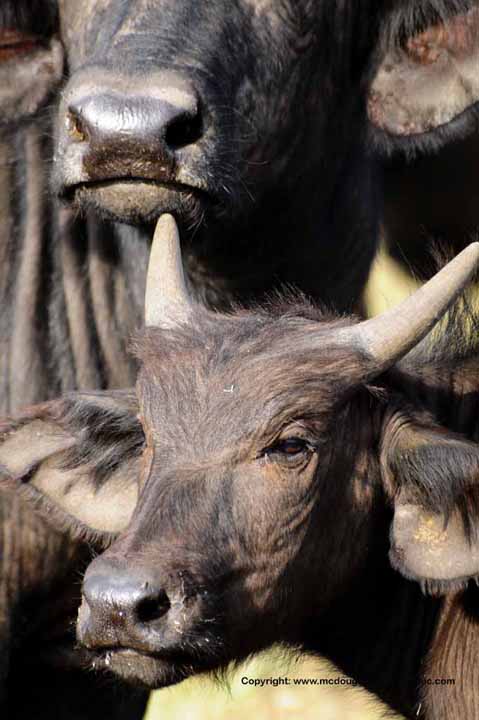
Many of the calls resemble the lowing of domestic cattle, it is particularly important that they effectively communicate given the large herd sizes and the close nature of their groups. Females calve at about 5 years and produce one calf after a gestation period
of 11.5 months (compared to 9 months for domestic cattle), the male is ready to enter reproduction competition at 8-9 years. Where wet and dry seasons are clearly defined buffaloes are seasonal breeders. Buffaloes in Kenya are regularly seen in the National
Parks and Reserves, the best places to see them are Lake Nakuru NP where they can often be seen on the lake shore and for larger herds Tsavo and Masai Mara are both good.
|
Amazing Facts About Wildlife
Keeping cool in the desert
Animals that survive in harsh environments display ingenious forms of adaptation, says S.Ananthanarayanan.
An example of adaptation of extreme conditions is the Arabian oryx or the large black and white antelope of the arid areas of Africa. This instance of evolution ‘to the very edge’, which even sports a built-in refrigeration system to save its hypothalamus,
was officially declared extinct 40 years ago. But fortunately, in the early 1960s, the late Sheikh Zayed bin Sultan Al Nahyan, founder of the UAE, arranged for two breeding pairs of the Arabian Oryx to be caught and preserved as the nucleus of a captive-breeding
programme
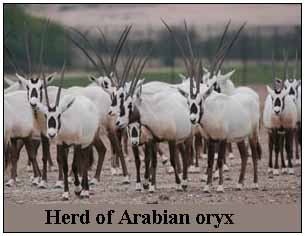
The release of captive-born Arabian oryx individuals into suitable habitats was carefully planned and started in 2007. With close monitoring, the programme has been effective and it is estimated that there are now 1,100 Arabian oxyr in the wild and 6,000 in
zoos, reserves and in private collections.
The places the oryx inhabits see effectively no rainfall, no vegetation except patches of grass and shrubs and daytime temperatures higher than 45°C. The oryx, then, has adapted to need no surface water for survival. The only moisture is from the grass and
shrubs, on which the oryx grazes during the night. By feeding during the night, the orxy saves on valuable fluid loss and also benefits from greater moisture content of grass. In the day, the oryx aligns itself to present the least area to the sun and will
seek shady spots or lie in cooler mud to shed heat. The oryx’ white belly also helps deflect the heat from the hot, desert sand.
Shedding heat
The great challenge, in fact, is to shed heat and maintain body temperature. Nature has two main categories of animals, the warm blooded and the cold blooded. Being warm blooded means the animal has to maintain its body temperature, which needs energy – burning
calories when it is cold and usually cooling by sweating when it is warm. The cold blooded animal simply takes the temperature of the environment and can manage with much less calorie intake. But metabolic processes are slower at low temperatures and cold
blooded animals often spend long periods in hibernation, getting active only when the environment warms up. Warm blooded animals are active through the year and are equipped to exploit the surroundings for more nutrition.
The problem arises when warm blooded animals need to deal with extreme temperatures. When temperatures are high, animals usually cool down by sweating and allowing evaporating fluids to carry away excess heat. But where there is a need to conserve even moisture,
then, one way of coping is to simply not cool down, but allow the body temperature to rise! This is a case of behaving like a cold blooded animal and (in a warm blooded animal) is called heterothermy, as opposed to homeothermy, or constant temperature, on
the one hand and poikilothermy, which is temperature varying with the environment, on the other.
Arabian oryx
Various studies have shed light on how the oryx, which manages with the least moisture intake of the all desert animals, deals with high temperatures. One study, in 2003, revealed that the oryx body temperature varies between 36°C in the morning to over 40°C
in the evening. The lowest temperature in the summer, in fact, was lower in the summer than in the winter, apparently to permit more heat trapping in the summer. But the maximum body temperatures are known to rise as high as 45°C, a temperature that would
be fatal to most other animals.
Warm blooded animals, which benefit from higher rates metabolism have evolved so that many vital functions depend on temperatures staying within narrow limits. Very high temperatures can thus threaten vital functions, the most sensitive being the central nervous
system or parts of the brain. Allowing the body to heat up could thus be dangerous when the ambient goes higher than 45 °C.
The Arabian oryx, and other desert animals, like camels often need to spend hours on end at temperatures as high as this. With the body temperature also rising, how do they avoid brain damage? The answer is found to be through a system of cooling the blood
that goes to the brain by a slightly energy consuming, but effective cooling device – the passage of air through the nose.
In the oryx, and the camel, the blood to the brain passes through a mesh of blood vessels in the animals’ sinus, where the blood comes into contact with blood vessels carrying bloods that is returning after passing by the nasal cavity. In the nasal cavity,
there is very economical evaporative cooling, which cools the blood in the surrounding blood vessels. This cooled blood comes into the sinus cavity and here it absorbs heat from blood going to the brain. It is also possible that the sinus cavity is anyway
cooler because of air from the nostrils expanding into the cavity. The carotid artery also seems to be in the form of crisscross of blood vessels in this region, to act as an efficient heat exchanger. And the effect is that despite all the warming of the animals’
blood, the brain gets temperature regulated supply and stays cool. Even when running for long, the faster breathing leads to more cooling and protects the brain despite still higher body temperature. "What is more, when there is greater rise in body temperature,
the vein system in the head region contracts and expands, so that more of the blood that has been cooled in the nasal passage must flow through the carotid heat exchanger, to assure cooling of blood supply to the brain."

The arrangement is highly efficient, as the cooling in the nasal passage is immediately absorbed by surrounding blood flow, and then transferred to the limited blood supply specifically for the temperature sensitive parts of the brain. The arrangements thus
permits saving of scarce moisture, by allowing body temperature to rise and yet avoiding the effect of rising temperature on the brain.
[the writer can be contacted at simplescience@gmail.com]
|
Burning Issues
Shola – grassland – The portrait of Indian Forest
A typical shola land is ‘Avalanche, about 30 km from Ooty and comprising of a lake, shola grassland as well as spectacular mountain view. Nilgiri biosphere reserve covers an area of 5500 sq.km in states of Karnataka, Kerala & Tamilnadu. In the upper Nilgiris,
there is no summer and winter season as such, but only wet and dry season prevails. Dry season commences from January to April. The western slopes receive rainfall about 3000 mm. It exceeds 5000 mm in some parts of Nilgiris. The first monsoon commences
from June until September and the next from October to December. The temperature around the year ranges from 0 to 400c.
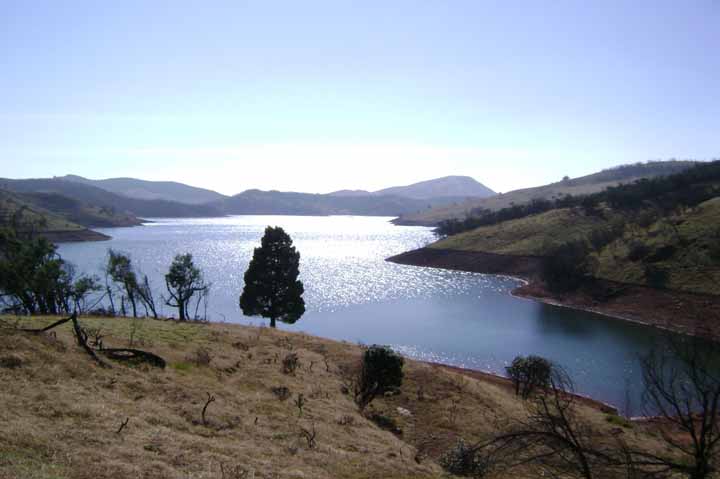
Shola - Grassland:
Shola finds its origin from Tamil word ‘sholai’ meaning thicket, cold place. Shola - grasslands are rich store houses of biodiversity and also home to extremely rich wildlife. They consist of dwarf trees growing 25-30 feet - vegetation is double layered
storey with closed canopy which hardly permits a single ray of sunlight to penetrate in the natural vegetation. Nilgiris upper region is classified as southern grassland mountain grassland. Mountain vegetation consists of patches of stunted evergreen forest.
Sharp ecotone between the shola and grassland structure has been attributed to prevalence of forest fire. These are some native shola trees are,
Pygecum gardneri, Scheffera racemosa, Linociera ramiflora, Syzium spp , Rhododendron nilgiricus, Mohonia nepalensis, Elaeocarpus recurvatus, Itex deticulata, Michelia Nilagirica.
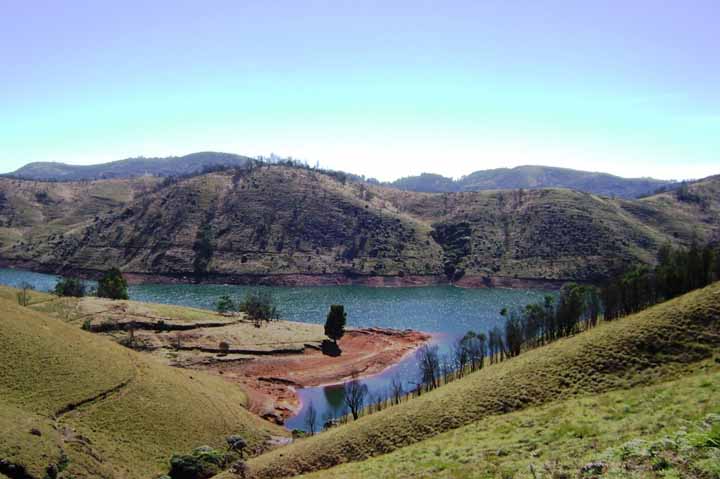
Branches of shola tree are colonized by epiphytes like lichen, mosses, orchids and ferns, beside woody climbers. They get water from the mist. Shola are natural sponges and they collect rain water in soil trunks, leaving cavities of trunk in monsoon and feed
thousand of perennial springs keeping them alive even during the severest of summer downhill. Shola also act as thermostats, remaining at a constant 15-20 Celsius, morning and night ,summer and winter. At same time, the temperature in the adjoining grassland
vary from 0 to 40 Celsius. Every shola, no matter how small it is, give birth to the springs, many rivers of south India originate in the sholas:Tunga Bhadra, Nethravathi, Cauvery etc. grasslands are so important as critical life giving waters.
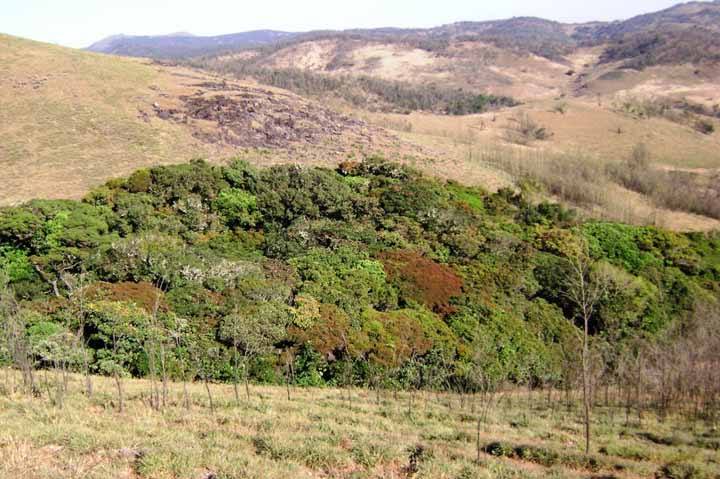
Flora & fauna
Flora & fauna of shola grassland are unique, they are home to most of the birds endemic to western ghats. Like black – orange flycatcher, Nilgiri pipit, Nilgiri laughing thrush, and mammals like Nilgiri langoor and most endangered species Nilgiri Tahr. The
grassland is being rapidly closed in by various woody exotic species for example lantana camera, ulex europaeus, Acacia mearnsii, Schoch broom and wattle. These plants are not native plants of the grassland. In the middle of 19th century, British set their
sights in the upper Nilgiris because there was close resemblance of climate and vegetation with their homeland. They cut the shola trees for need of timber and fire wood. Some of the forest conscious Britishers did take some care to protect sholas, though.
Since grasslands were considered as wastelands they turned were into farming land. They started to plant exotic plant wattle, pine,
Acacia mearnssii, schoch brrom, resulting in decline in number of population of Nilgiri tahr. The reason was that those exotic plants competed with the grass land species for soil nutrients resulting in stunted growth.
Species like Chrysopogan zeylanicilus, Cymbopogan hexuosus, Arundinella tubercutata are characterized as frost and fire resistant.
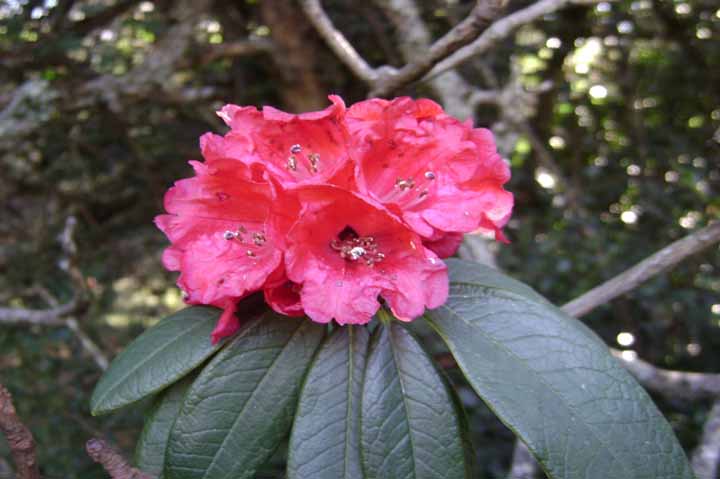
Some shola area suffered from excessive burning, resulting in shrinkage of forest and fire is also one of the major factor which not only depletes undergrowth but also facilitates the seed germination of fast invading, weed plants by breaking seed dormancy.
Shola is a very sensitive type of vegetation. Once it vanishes from its original habitat, it is very difficult to make it reappear in view of the change in climate which does not allow shola seedling to grow in open grasslands, the few remaining shoal - grassland
landscape are found inside the Mukurthi national park on the western slopes of the Nilgiris and in vicinity of Avlanche.
Unfortunately nearly 80% of the original environment has been destroyed by encroachment, ignorance of its value and more than 60% of the grassland has disappeared, shola-grass lands are declining at an alarming rate. Deforestation for purpose of agriculture
has sounded the death knell for shola and grasslands as well as warning bells for the flora and fauna of Nilgiris grassland –shola. Sholas also serve as a source of herbal medicines.
It is necessary to document the unique biodiversity and evolve strategies to conserve this vital and threatened ecosystem, urgent action needs to be taken by all of us to save this priceless natural heritage at any cost. Deforestation not only affects the
biodiversity of flora and fauna of shola-grassland but it results in a severe imbalance of whole ecosystem. Hence, arises the need to conserve the portrait of the Indian Forest.

(Text and Photographs by Prajakta Hushangabadkar, blumepraja7@gmail.com)
|
Events
Nature Education Program
Nature Conservation Society, Amravati (NCSA), Satpuda Foundation's sister organization, announces its nature education programme for CBSE school students. The programme will be conducted as always at Melghat Tiger Reserve.
Please read the details in our blog http://satpudatiger.blogspot.com/, or else in the Tigers of the Satpudas group>Discussions>Excursion to Melghat.
There will be two programmes every month from October 2010 to February 2011. Bookings will be made from September 1-15, 2010. Those interested should email ncsa.india@gmail.com for information, bookings and the programme schedule.
Also read the interesting note on Melghat Tiger Reserve posted in our group in Discussions>About Melghat.
A report on a typical nature education programme:
http://satpudatiger.blogspot.com/2010/01/winter-nature-study-camp-at-melghat.html
Island Ecology Experience
The Andaman Islands
This October, when the monsoons begin to ease off, The Gerry Martin Project (TGMP) and ANET will be running a six day workshop that will take participants through a structured and focused experience of the islands.
Through the workshop, there will be a combination of experiences, presentations, exploration and skill building. We will visit and explore various habitat types from rainforest and coastal habitats to inter-tidal zones and coral reefs.
We will look at the various habitats from numerous perspectives. There will be the single species approach like dugongs and coral reefs or shorelines and sea turtles. Then there are ecosystem and ecological perspectives of how numerous organisms work simultaneously
with their environment to survive and succeed, consequently affecting the environment and often the others in the system.
We will also be using the various habitats to help us build skills. We will learn the basics of canopy access using rope systems. There will be the basics of snorkeling, night surveys, bio-statistical sampling and more.
At the base, we will stay in quaint cottages that are erected on stilts, with bamboo thatch roofs. The huts are also well visited by much of the small local wildlife. The food is all very authentic and truly mouth watering!
ACTIVITIES:
• Understanding Island Ecologies
• Mangrove walks- Searching for specialized animals
• Intertidal Zone- Understanding this unique niche
• Visits to the reef
• Crocodile Ecology
• Herpetofaunal survey technics
• Photography sessions
• Ecology presentations
• Canopy access (weather dependent)
• Snorkeling for marine life
• Loads of hands on experience
• Night surveys
Andaman and Nicobar Islands Environmental Team (ANET)
More details at
http://www.facebook.com/event.php?eid=119446018107352
Wildlife & Biodiversity conservation Photography exhibition
Voice for wildlife invites you
Time
Tuesday, October 12 at 11:00am - October 26 at 8:00pm
Location
Regional Musem of Natural History
Siddharth Nagar, Indira Venkatlinga Layout Mysore, Near Mysore Diary
Mysore, India
A photography exhibition which showcases the Biodiversity, Wildlife, and associated conservation challenges.
Butterfly Nature Trails
Butterfly Nature Trails are exclusive for butterfly photograhy with the guidence of expert naturalists and wildlife photographers.
Similar event will be organise on 17 / 24 / 31 Oct 2010
Details for Butterfly Nature Trail
...
Date : Sunday 10th October 2010
Time : 8.00 am to 11.00 am
Venue : Owalekarwadi, Owale village, Ghodbunder Road, Thane (w)
Charges : call for the charges (includes Breakfast, Butterfly chart & expert guidance charges)
Owale village is foothills of Yeoor and this particular farm is developed with lots of Butterfly attractant plants – around 75+ species can be seen here and it is wonderful opportunity to see those flying beauties and even you can capture them on your digital
camera with the help of famous wildlife photographers.
(it is around 10 km away from Thane city – any bus going towards Boriwali / Bhayander will drop you at Owale Village stop –
from there you have to walk in village road for “Owalekarwadi”
it is 3 km ahead of suraj Water park.
Yuwaraj Gurjar - ygurjar@gmail.com / (9892138338 after 7 pm)
Makarand Joshi - 9869304053
Green Raagas
Multimedia performance at Dilli Haat, Pitampura, New Delhi
4th and 5th October, 7PM to 9PM
|
Green Defenders
Rescue of Barasingha (swamp deer) Trophies
-Text and photographs by Prajakta Hushangabadkar
Angad,Sachin,Akil and Prajakta members of People for Animals in Amravati, trapped medicine shop keeper selling animal parts illegally. Trophies of Barasingha horns and Porcupine quills were found in the shop.
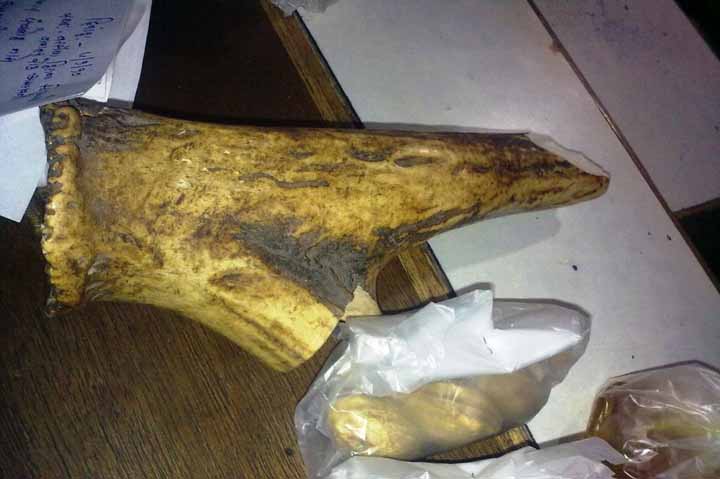
The parts are sold by the people for medicinal use, like cough and some skin diseases. Trophies having weight near about 3kg each were seized by us. Shop keeper sold each porcupine thorn for Rs 10/- for per 20 gram of piece of barasingha horn Rs 20/- was charged.
The illegal business has been on for the last 25 years, we understand. Porcupine thorns are used as an Antioxidant.
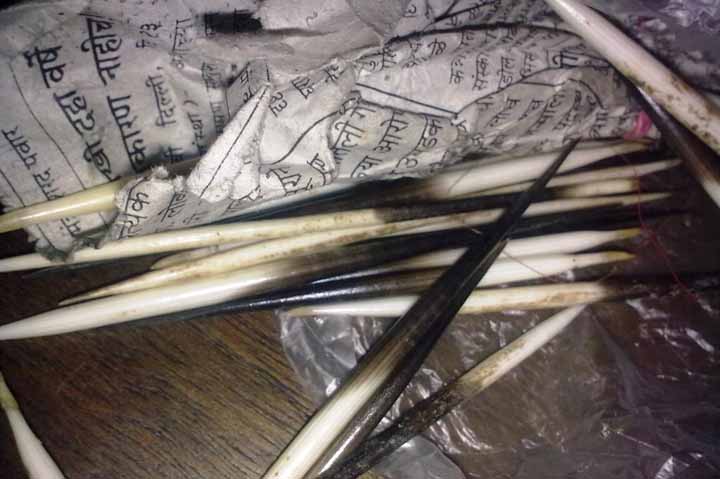
Barasingha comes under “INDIAN WILDLIFE PROTECTION ACT” SHEDULE I. The few number of barasingha that remain are found in India only at Kanha forest. I think these guys really did a great job with help of forest department Amravati. Keep doing work guys.
If you know people who work for wildlife rescue and conservation share with us by mail by sending photos and a paragraph about the work, information, achievement in wildlife conservation etc, so that others get motivated to do the same. Thank you.
The details may be sent to Prajakta.greendefenders@gmail.com
copy to susan_sharma@hotmail.com
|